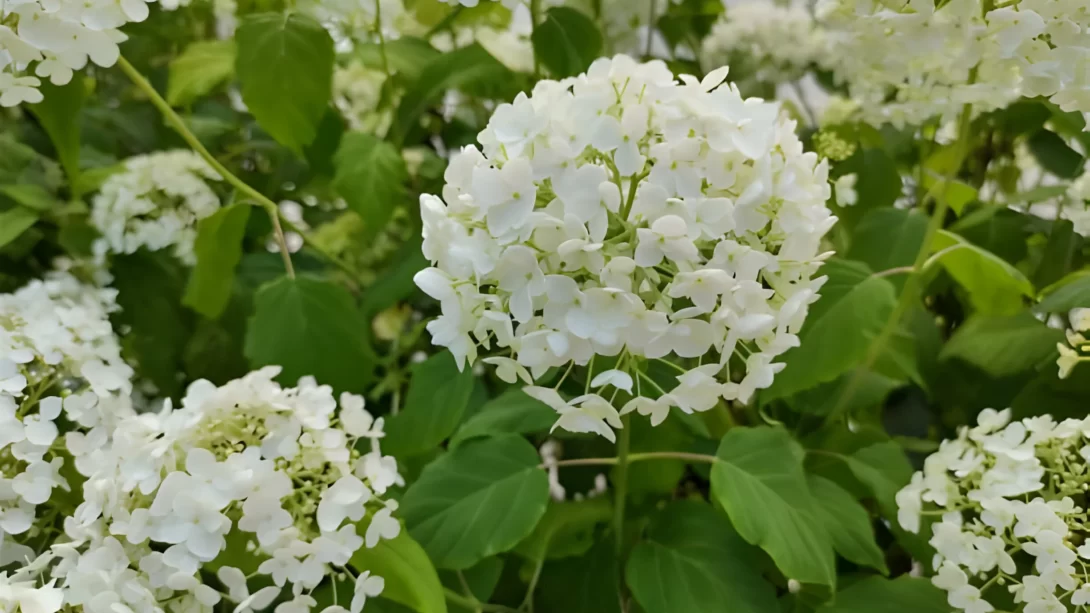Annabelle hydrangeas, known for their stunning, large white blooms, are a favorite among gardeners for their beauty and resilience. Pruning is a crucial aspect of caring for these plants, as it promotes healthier growth and more abundant flowering. This guide delves into the best practices for pruning Annabelle hydrangeas, focusing on the ideal timing and techniques to ensure your hydrangeas thrive.
Annabelle Hydrangeas
Hydrangea arborescens ‘Annabelle’ is renowned for its large, white, spherical flower heads that can enhance any garden space. These hydrangeas are particularly noted for their ability to bloom reliably each year, even after harsh winters or improper pruning. They typically flower on new wood, meaning they produce blooms on the current year’s growth. Understanding this growth pattern is key to effective pruning, as it guides the timing and method of pruning to encourage both the health of the plant and its aesthetic appeal.
The Best Time for Pruning Annabelle Hydrangeas
The optimal time to prune Annabelle hydrangeas is late winter to early spring. This timing, just before the new growth begins, ensures that the pruning does not interfere with the upcoming bloom cycle. Pruning during this period also allows for easier identification of dead or weak stems that need removal. In colder climates, waiting until the risk of the harshest frosts has passed is advisable to prevent any frost damage to new growth. This period typically falls between February and April, depending on your specific regional climate.
Preparing to Prune
Before you begin pruning your Annabelle hydrangeas, it’s essential to have the right tools. Sharp, clean pruning shears or loppers are ideal for making clean cuts that heal quickly. To prevent the spread of disease, clean your tools with a disinfectant before and after use. Safety should also be a priority; wear gloves to protect your hands and eyewear if needed. Start by assessing your hydrangea’s overall health and structure. Look for dead, diseased, or crossing branches that need removal, and plan your cuts to maintain the plant’s natural shape.
Pruning Techniques for Annabelle Hydrangeas
Pruning Annabelle hydrangeas involves a few key steps and techniques. First, remove any dead or damaged wood, which can be identified by its dry, brittle appearance and lack of buds. Cut these stems back to the base of the plant. Next, focus on thinning the plant to encourage air circulation and light penetration, which are crucial for healthy growth. Remove some of the older stems, cutting them back to the ground to encourage new growth. When shaping the hydrangea, aim for a rounded form, but avoid over-pruning, as this can reduce the number of blooms. It’s generally safe to cut back one-third of the total height of the plant. Remember, since Annabelle hydrangeas bloom on new wood, pruning stimulates the growth of new flowering stems.
Post-Pruning Care
After pruning, taking care of your Annabelle hydrangeas is important to support their recovery and growth. Water the plants deeply, especially if the weather is dry, to help them recuperate from the stress of pruning. Early spring is also an ideal time to apply a balanced, slow-release fertilizer to provide essential nutrients for new growth. Adding a layer of organic mulch around the base of the plant can help retain moisture, regulate soil temperature, and suppress weeds. Keep an eye out for any signs of pests or diseases, as freshly pruned plants can be more vulnerable. Regular monitoring and prompt treatment of any issues will help ensure your hydrangeas remain healthy and vibrant.
Seasonal Maintenance Tips
Beyond pruning, Annabelle hydrangeas require ongoing care throughout the year to maintain their health and beauty. In the growing season, ensure they receive adequate water, particularly during dry spells, as hydrangeas thrive in moist but well-drained soil. Be vigilant about pests like aphids and spider mites, and diseases such as powdery mildew, treating them promptly if they appear. In summer, during peak blooming, you may need to provide support for the heavy flower heads to prevent them from drooping. As fall approaches, reduce watering and stop fertilizing to allow the plants to prepare naturally for winter.
Winterizing Annabelle Hydrangeas
In preparation for winter, especially in areas with harsh conditions, take steps to protect your Annabelle hydrangeas. While they are hardy plants, a layer of mulch over the root zone can help insulate against extreme cold. Avoid heavy pruning in the fall, as this can stimulate new growth that will be vulnerable to frost damage. If your region experiences severe winters, consider erecting a burlap screen around the plants to shield them from cold winds and heavy snow.
Conclusion
Pruning Annabelle hydrangeas at the right time and in the right way is key to encouraging lush, vibrant blooms and maintaining the health of the plant. Late winter to early spring pruning, coupled with proper care throughout the year, will ensure your hydrangeas remain a stunning feature in your garden. Remember, each plant is unique, so observe and respond to the specific needs of your hydrangeas. With these tips, you’re well on your way to enjoying the spectacular display of Annabelle hydrangeas year after year.




